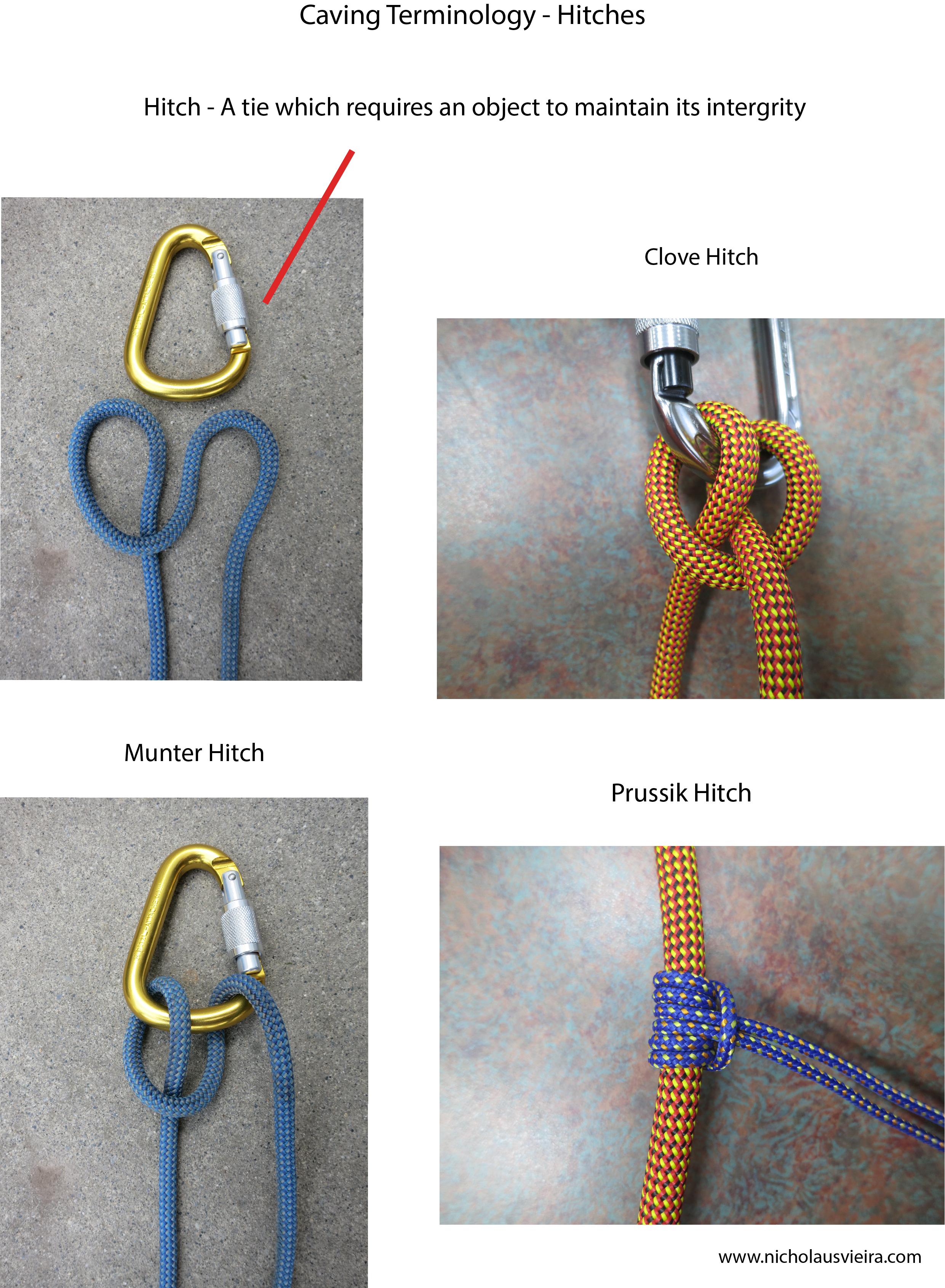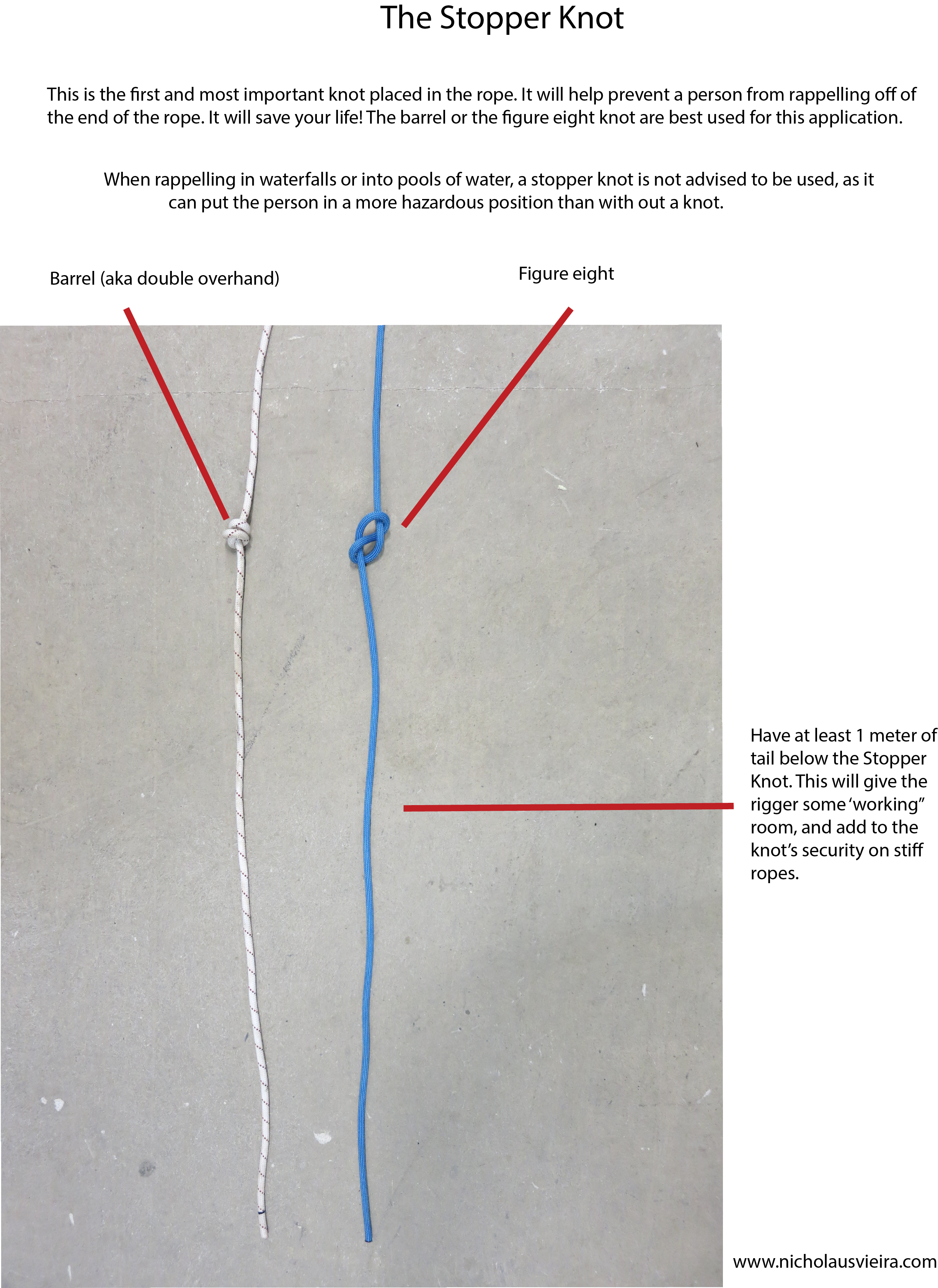Knots - General information for cavers, climbers, and canyoneers.
Knots are an integral part of everyday life, and for the outdoor enthusiast is ever more important. Knot craft is a signature, it is the start of your reputation. A well tied knot speaks volumes, as does an undressed knot. The well-dressed knot suggests a level of care, knowledge and experience. The undressed knot suggests a lack of care, knowledge and introduces mistrust.
Terminology
Knowing some basic knot terminology will help you communicate to others, and understand what others are trying to communicate to you.
Some knot terminology to know:
• Bight - A section of rope bent 180 degrees to form a "U" shape)
• Loop - A turn of rope that crosses itself
• Bend - The joining of two rope or webbing ends together
• Hitch - A tie which requires an object to maintain its structural integrity
• End-line knots - Knots used at the end of the rope to attach it to an object
• Mid-line knots - Knots used in the middle of the rope to attach the rope to an object
• Stopper knots - Knot placed to stop you from descending off the rope, etc.
• Rope gripping hitches - A hitch that grips the rope, preventing it from moving under body weight loads
Good Knot Characteristics
• Easy to Tie
When tired, wet, c-cold, in the dark, etc
With or without gloves, or fingers!
All types of ropes: stiff, supple, frozen, muddy, etc
Stressed, or excited
• Easily confirmed over a distance that it is tied correctly
It may not be reasonable to physically check the knot was tied correctly. So you must do it visually over a distance.
Dressing the knot is important.
Ask yourself is it a safe knot to use?
• Secure under tension and does not slip
Use only secure and proven knots
If using the Bowline, it must have a backup knot, to prevent it from coming apart.
• Weakens the rope to a minimum
Knots weaken the rope
Each knot will have different results, as well as the rope.
As a rule-of-thumb use 30%. Some will be worse, others better (the “standard” knots).
• Easy to untie
When possible, use knots that will be easy to untie after being loaded.
Tying
• Choose the best knot for the application (try to avoid abnormal loading)
• Tie it
• Dress it
• Pretention it
Knots to know. Know the list:
• Overhand
• Overhand on a bight
• Figure eight
• Figure eight on a bight
• Figure eight follow through
• Butterfly
• Clove hitch
• Italian hitch with Tie off (munter mule)
• Prussik hitch
• Girth hitch
• Water bend
• Double fisherman’s bend
• Bowline (with a backup)
• Double loop figure eight
Adding challenges and becoming better.
Most people practice or learn how to tie knots sitting down or standing up. While this is very useful when first learning how to tie and identify various knots/hitches/bends it seldom mimics the conditions which you will be tying them in later. Continuing to “practice” in this way will not help you to become solid in your knot craft. I suggest that once you know how to tie a knot you then practice it in a variety of body positions and introduce a variety of stresses.
As an example, when tying knots you should give yourself restrictions, must be able to complete the knot in a reasonable time frame, and in some form of physical/mental stress!!
Examples of restrictions are:
• Loops sizes (loops no larger than your palm, or so it can fit over your shoulders, etc)
• Knot is always dressed
• Tail length is between one and two palm lengths, etc
Examples of a reasonable time frame:
• Able to tie knots in 15 seconds
• Able to tie hitches in 15 seconds
• Able to tie Bends in 30 seconds
Examples of physical/mental stresses:
• Various body positions (Above your head, laying on your back or belly, on leg, unable to see, etc)
• Cold (body or hands)
• Muddy ropes
• Wearing gloves
• In the dark via headlamp
• Tired
• Around loud noises
Please, please, please practice your knot craft! Knot craft is the foundation of it all. Practice with gloves on, under time constraints, be picky about dressing the knots, remember loop sizes, tail lengths etc.
It is up to you, be accountable!
Grow, fail, learn and succeed!











